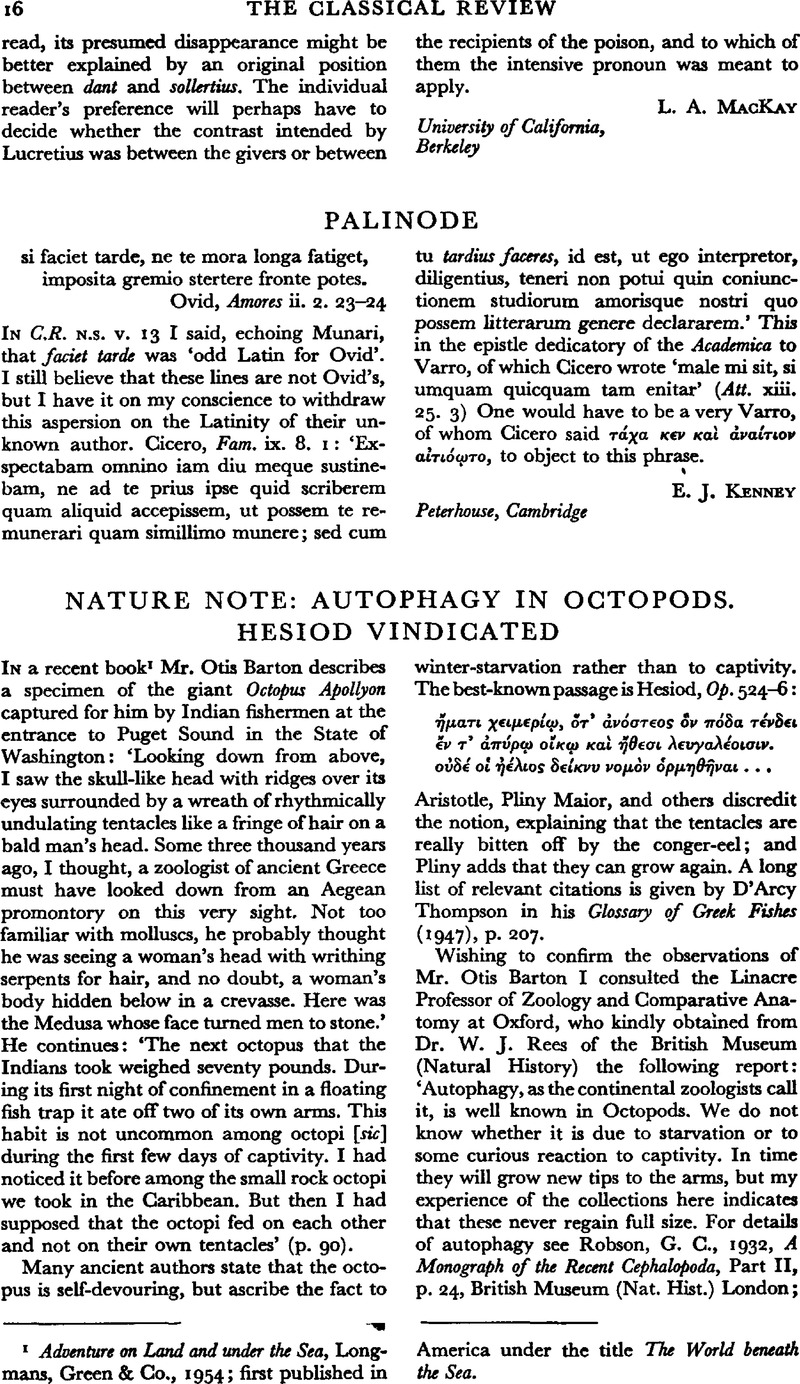Article contents
Nature Note: Autophagy in Octopods. Hesiod Vindicated
Published online by Cambridge University Press: 13 February 2009
Abstract

- Type
- Review Article
- Information
- Copyright
- Copyright © The Classical Association 1957
References
page 16 note 1 Adventure on Land and under the Sea, Longmans, Green & Co., 1954Google Scholar; first published in America under the title The World beneath the Sea.
page 17 note 1 Od. v. 432 f.
page 17 note 2 At least ten examples will be found in Bossert, H. Th., The Art of Ancient Crete (Zwemmer, London, 1937).Google Scholar
page 17 note 2 The term πολύπους, like ‘cuttle-fish’, is sometimes generic. In Homer, loc. cit., it apparently includes the cuttle-fish (σηπία) and the calamary (τευθὶς and τεῦθος), for the octopus lacks the two long anchoring tentacles (προβοσκίδες). Cf. D'Arcy Thompson, op. cit., p. 232, top.
page 17 note 4 Ibid., p. 205, with an addition by Dr. Rees.
page 17 note 5 A.J.P. l (1929), 76–78.
page 17 note 6 The Times, 10 March 1956, under the heading ‘Tame Dolphin found dead’. On dolphin riders in antiquity see D'Arcy Thompson, op. cit., pp. 54–55.
- 1
- Cited by


